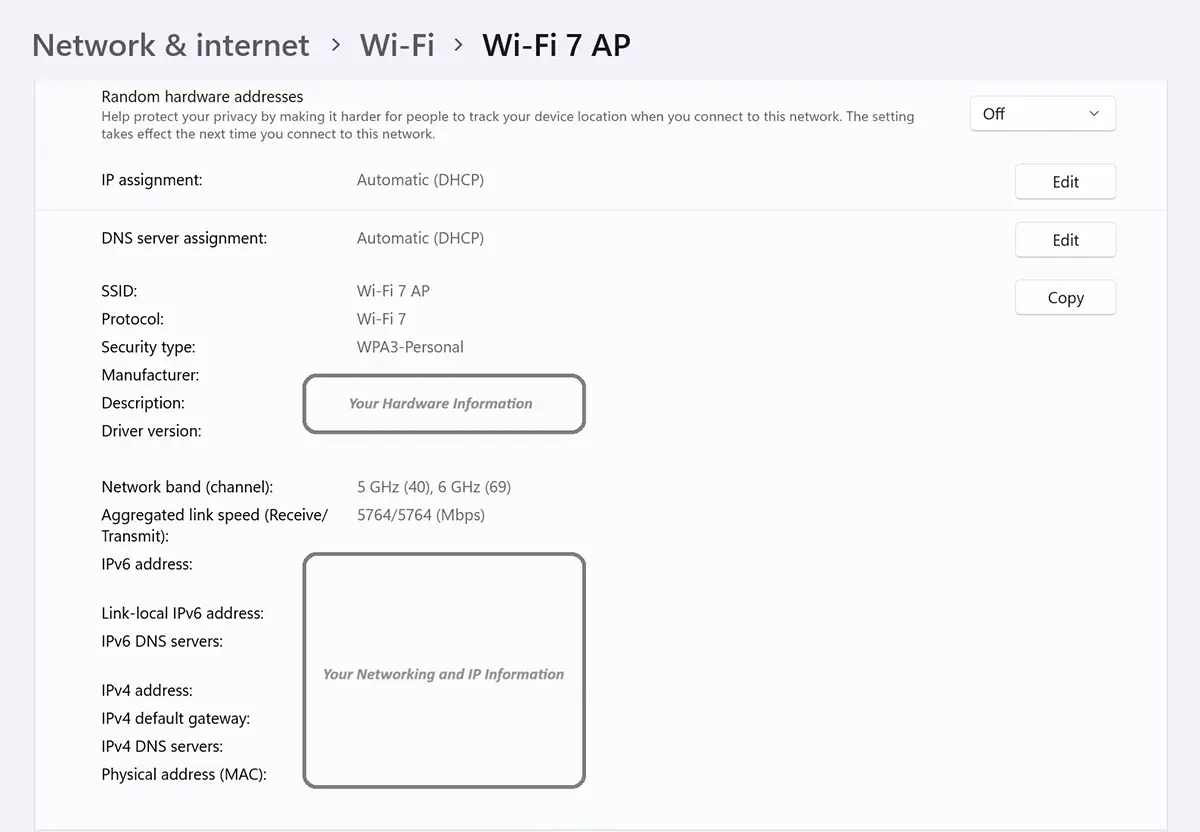Shortly after the Wi-Fi Alliance announcement, Microsoft integrated Wi-Fi 7 into Windows 11 for users whose computers are enrolled in the Windows 11 Insider Preview Canary Channel and Dev Channel. Thus, Windows 11 is the first operating system to support Wi-Fi 7.
As demand for connectivity increases, Wi-Fi standards need to evolve to keep pace. From video streaming to online gaming and remote work, we need increasingly faster and more stable internet speeds, and Wi-Fi 7 represents a significant step in this direction.
Wi-Fi 7, also known as IEEE 802.11be Extremely High Throughput (EHT), represents a significant technological leap over previous generations of Wi-Fi. This revolutionary technology brings to the forefront a series of innovative features designed to improve connectivity and user experience.
What are the advantages of Wi-Fi 7 on Windows 11
Compared to previous technologies, Wi-Fi 7 offers transfer speeds up to 4 times faster than Wi-Fi 6 and Wi-Fi 6E, and nearly 6 times faster than Wi-Fi 5. Additionally, the reduced latency provided by Wi-Fi 7 significantly improves the responsiveness and performance of real-time activities such as gaming and video conferencing.

Related: What advantages does Wi-Fi 6E offer, the 6 GHz 802.11ax band
Faster Speeds: Wi-Fi 7 has the potential to deliver speeds of over 40 Gbps, 4 times faster than Wi-Fi 6E. This will enable faster downloads, 4K/8K video streaming without buffering, and a smoother online experience overall.
Through the 4096-QAM modulation supported by Wi-Fi 7 on Windows 11, data transmission efficiency is increased by 20%, resulting in superior quality of video streaming, video conferencing, and other multimedia applications. These improvements provide a smoother and more enjoyable user experience for Windows 11 users, regardless of their online activities.
Increased Capacity:: Wi-Fi 7 is designed to handle multiple devices simultaneously, reducing network congestion and improving performance in dense environments such as stadiums, conference rooms, or homes with multiple smart devices.
Lower Latency: Wi-Fi 7 will significantly reduce latency, the time it takes for devices to communicate with each other. This will be beneficial for time-sensitive applications such as online gaming, virtual reality, and telemedicine.
Increased Energy Efficiency: Wi-Fi 7 will include features that improve the energy efficiency of devices, extending the battery life for laptops running Windows 7 operating system, which are Wi-Fi 7 compatible.
Additionally, Wi-Fi 7 will include other new features such as Multi-Link Operation, which allows devices to simultaneously connect to multiple access points for better performance, and Puncturing, which allows more efficient use of the radio spectrum. With the ultra-wide 320 MHz bandwidth in the 6 GHz range, Wi-Fi 7 doubles the speed to devices and opens up new possibilities for bandwidth-intensive applications such as augmented and virtual reality.
In conclusion, the integration of Wi-Fi 7 into Windows 11 represents a significant step towards the future of wireless connectivity. With impressive transfer speeds, improved reliability, and reduced latency, Wi-Fi 7 redefines the standards for the online experience, providing users with the ability to enjoy high-performance wireless connectivity.
Wi-Fi 7 is still under development, but the first compatible devices are expected to appear in 2024.